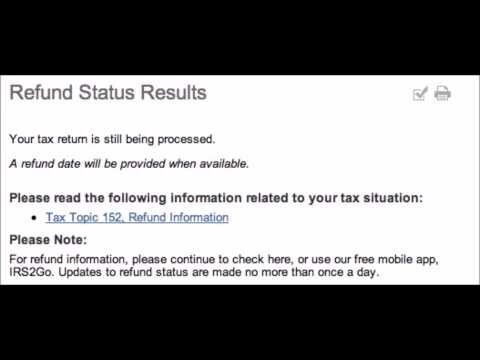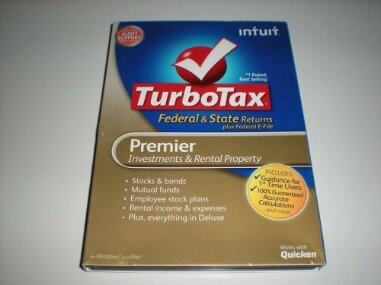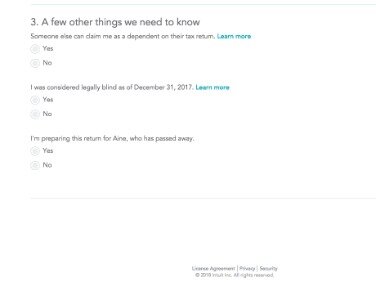Contents:


If out of balance, immediate attention is needed to regain financial wellbeing. Notice that we have an account called sales discounts and allowances. This account is a contra account that goes against sales revenue on the income statement.

The promissory note gives the legal right to the holder to receive a specific amount in the future. The borrower has the obligation to pay otherwise they need to face with law. You do the same for the portion of notes receivable you expect will be settled in the next year. The money you’ll receive more than 12 months out goes on the books as a non-current asset. When the account is paid as agreed, it is recorded as a deposit and is no longer a receivable.
Net Realizable Value of Accounts Receivable
The accounts payable balance includes all invoices that are due to be paid to vendors or suppliers for goods or services. Another important note to make is that sometimes companies will attach discounts to their account receivable accounts to incentivize the borrower to pay back the amount earlier. The discounts benefit both parties because the borrower receives their discount while the company receives their cash repayment sooner, as companies require cash for their operating activities. Once an invoice is received, items classified within the accounts payable are recorded as liabilities in a ledger. Accounting and finance teams are responsible for receiving invoices and issuing payments before the due date to avoid penalties.

Create a formal, encumbrance accounting policy for collections, and enforce the policy. Company bookkeeping may require your firm to post dozens of receivable transactions each week. See FSP 12 for further discussion of discount and premium presentation and disclosure considerations from the debtor’s perspective. In addition, if the reporting entities disclose internal risk ratings, they should provide qualitative information on how those ratings relate to the risk of loss. At the end of the three months, the note, with interest, is completely paid off.
What Are Accounts Payable?
Generally, when an invoice is received, it’s recorded as a journal entry and posted to the general ledger. When the expense is approved by the authorized employee, a check is cut based on the terms of the purchase agreement. Often these terms are 30, 60, or 90 days from receipt of the invoice. More sophisticated terms and real-world circumstances can quickly complicate the straightforward example above and cause Sparky exponential accounting work. If Sparky’s fiscal year ends during the note receivable term, additional journal entries are required for interest accruals. And if Joe fails to pay any part of the note, Sparky would need journal entries to record write-offs.
Veteran Broker Suspended over His Own Private Investments – Financial Advisor IQ
Veteran Broker Suspended over His Own Private Investments.
Posted: Wed, 05 Apr 2023 07:00:00 GMT [source]
An e-commerce brand uses transportation and logistics services to get its products shipped to its customers plus a warehouse to store its products. Since payment is made at a later date, costs are included in the accounts payable. Accounts payable are short-term debts your company owes to vendors and suppliers. Some examples include expenses for products, travel expenses, raw materials and transportation. Working capital management is a strategy that requires monitoring a company’s current assets and liabilities to ensure its efficient operation. When it becomes clear that an account receivable won’t get paid by a customer, it has to be written off as abad debt expense or one-time charge.
Assume that Local Retailer borrows $20,000 from its bank and signs a promissory note due in six months. Local Retailer records $20,000 as a credit to its current liability account Notes Payable . When it comes to accounts payable, good working relationships are imperative to keep stress levels down. From an accountant’s perspective, your clients’ customers will expect timely invoicing and favorable terms.
The accounts receivable turnover ratio is the net credit sales for a given period divided by the average accounts receivable. The AR turnover ratio is used to determine a company’s efficacy at extending and collecting on credit with its clients. A high turnover ratio indicates that a business is more conservative in extending credit or more aggressive in collections.
Accounts receivable are part of a larger group of receivables that also include notes receivable and other receivables such as rent receivables, loans, term deposits and more. There are many types of receivables to account for a vast array of industries and circumstances. A company that keeps track of accounts payable will be able to determine where its money is going and how to be more cost-efficient. Meanwhile, a business that monitors its accounts receivable will be able to be up to date on its profitability and follow up on invoices past the due date.
What Are Notes Receivable?
To further understand the difference in these accounts, you need an overview of a company’s balance sheet. BWW issued Sea Ferries a note in the amount of $100,000 on January 1, 2018, with a maturity date of six months, at a 10% annual interest rate. On July 2, BWW determined that Sea Ferries dishonored its note and recorded the following entry to convert this debt into accounts receivable. Notes receivable are useful asset accounts for businesses to understand. They play a part in increasing collectability of amounts owed, plus they generate revenue in the form of interest. Accounting for notes receivable can be burdensome and error-prone if approached manually.
Beyond mere accounting procedures, accounts payable and accounts receivable are the means to understand the financial health of a business. When your clients have a solid handle on accounts payable, they will be able to establish where their money is going and decide how to be more efficient. Conversely, scrutinizing accounts receivable will help your clients understand their profitability and follow up to procure any late payments.
When Goods Are Sold On Credit
Liquidity is defined as the ability to generate sufficient current assets to pay current liabilities, such as accounts payable and payroll liabilities. If you can’t generate enough current assets, you may need to borrow money to fund your business operations. You should classify a note receivable in the balance sheet as a current asset if it is due within 12 months or as non-current (i.e., long-term) if it is due in more than 12 months. If a customer has trouble paying their accounts receivable bill, some businesses will offer more time to pay, in return for signing a promissory note setting out the new terms. This can lead to expensive collection activities and is also why some “pay later” transactions may require credit checks and other risk-mitigation efforts ahead of delivery of goods and services. Payment delays and AR value deterioration typically continue if collection activities are not promptly executed.
To gauge the profitability of your business, determine the total of your assets and accounts receivable. In contrast, a negative balance indicates that you need to rethink your current business model and limit expenses to avoid being in the red. Accounts receivable are the balance of money due to a firm for goods or services delivered or used but not yet paid for by customers. Accounts receivable are listed on the balance sheet as a current asset. Any amount of money owed by customers for purchases made on credit is AR.
Key Components of Notes Receivable
If they’re not paying up front, you present them with an invoice, then enter the $2,000 owed in your business records. Unless you’re running your business strictly on a cash basis, you count the $2,000 as income once you deliver the ball bearings. When you update your balance sheet, you take the total amount your customers owe you and record it as accounts receivable. Just as the $2,000 counted as income, on the balance sheet you treat it as an asset. A finance and accounting solution helps businesses save time, improve control and increase productivity by automating both invoice processing and payments.

Notes receivable have a higher probability of payment than purchases made on simple credit, which are known as open trade receivables. That’s because of the signed promissory note, which can be presented as evidence in a legal proceeding. In addition, notes receivable can potentially be sold to third parties. By reducing unpaid, “bad” debts, collecting interest income and facilitating contract sales, notes receivable can be a tool for enhancing cash flow.
A rise indicates a cash outflow since more clients have made credit payments, which means the company has less available cash. As the turnover ratio is 2, the company can collect receivables twice a year. This ratio calculation includes dividing net credit sales by average AR. In direct write-off, the company debits the bad debt account while crediting the AR account.
- Accounts receivable are the balance of money due to a firm for goods or services delivered or used but not yet paid for by customers.
- If payment is not received, the company may send another invoice to reflect the new balance with late fees.
- Sloppy AR records could result in difficulty securing accounts receivable financing or a loss of confidence from potential investors.
- For every sale or purchase, your business will either issue or receive an invoice.
- The above entry however would be recorded only if Ace Paper Mill receives the payment within the discount period.
Net Credit Sales include the value of goods sold on credit for which payment is received at a later date. Further, on the day when the payment is made, Lewis Publishers will record such a payment in the following manner. Accounts Payable account would be debited by $200,000, Cash Account would be credited by $198,000, and Paper Account would be credited by $2,000. Now, Lewis Publishers purchases this quantity of paper on credit from Ace Paper Mill.
Eagle Bancorp, Inc. Announces Net Income for First Quarter 2023 of $24.2 Million or $0.78 per Diluted Share – Marketscreener.com
Eagle Bancorp, Inc. Announces Net Income for First Quarter 2023 of $24.2 Million or $0.78 per Diluted Share.
Posted: Wed, 19 Apr 2023 20:16:16 GMT [source]
A procedures manual ensures that routine tasks are completed in the same manner each time, and the manual allows your staff to train new workers effectively. You need a steady stream of cash inflows to operate your business, and monitoring accounts receivable is a part of the cash management process. The discount or premium resulting from the determination of present value in cash or noncash transactions is not an asset or liability separable from the note that gives rise to it. Therefore, the discount or premium shall be reported in the balance sheet as a direct deduction from or addition to the face amount of the note. Similarly, debt issuance costs related to note shall be reported in the balance sheet as a direct deduction from the face amount of that note. The discount, premium, or debt issuance costs shall not be classified as a deferred charge or deferred credit.
A tech company manufacturing laptops and smartphones may subcontract factories based in Taiwan or Vietnam to assemble the parts. Payments to subcontractors for services rendered will be considered as accounts payable. A jewelry merchant buys beads and stones in large quantities to produce several charm necklaces and bracelets on credit.
For that matter, the sales discount and cash account are in debit, and the AR account is in credit. When the customer makes the payment, there is a journal entry for debit on the cash account and credit on the AR account. For accounts receivable, auditors look at accounts that are past due beyond 120 days. If leaders determine the client can’t or won’t pay, finance needs to remove the amount from AR and charge it as an expense. Auditors use different methods to evaluate the efficacy of accounts payable and accounts receivable safeguards.
Before realization of the maturity date, the note is accumulating interest revenue for the lender.Interest is a monetary incentive to the lender that justifies loan risk. The interest rate is the part of a loan charged to the borrower, expressed as an annual percentage of the outstanding loan amount. Interest is accrued daily, and this accumulation must be recorded periodically . The Revenue Recognition Principle requires that the interest revenue accrued is recorded in the period when earned. Periodic interest accrued is recorded in Interest Revenue and Interest Receivable.